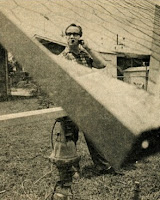 |
| W4EJA |
I first heard about this accomplishment about 12 years ago and was able to find very little technical info about it online - so I did a little searching, found Larry's number in Kentucky and called him on the phone. He had no email address that I was able to find.
We spoke briefly to coordinate a time when I could call again for a more detailed conversation. That conversation lasted just under an hour.
It was amazing to hear Larry tell the story in his own words, filling in details that were missing from the online and newspaper resources that were available.
 |
| Click for larger |
The ARRL published a write-up of Larry's Apollo reception here.
.
Fast forward to the near future:
As soon as this February, the Japan Aerospace Exploration Agency (JAXA) will have two ham-band transmitters sending PSK31 data on 437 MHz: one will be in lunar orbit; the other will be on the Moon's surface.
An ARRL article is here and a more detailed description of the radio equipment is here.
The mission will only last 4 or 5 days and I'm hoping that even more detailed info will soon be published to describe what type of antenna might best be suited to receive these transmissions. Will a simple Yagi work? Fortunately, resources are available for circularly polarized antenna construction.
The AM transmitters Larry was able to received had an output power of 20 watts. I'm guessing that reception of a 1-watt PSK31 signal should be fairly easy in comparison...?
.
.

Lemme see 20W DSBFC (dunno bandwidth) on (likely) tube-based equipment versus 1W PSK31 in nearly CW bandwidth on modern equipment: Not really a contest or (likely) all that hard on 437 MHz provided no one else is illuminating the moon on that freq.
ReplyDeleteWhat they did back then (before I was born) in their back yard was amazing! We truly have it SOOO easy now!
Merry Christmas!
Yes, what they accomplished really was amazing. Of course, from their perspective, everything was "high tech"!
DeleteRegarding the possibility of copying the JAXA transmission, W6RZ wrote this:
"The average distance to the moon is 384,000 km. At 437.41 MHz, that's 197 dB of path loss.
1 watt is +30 dBm. The article doesn't say what antenna will be used, so assume 0 dBi gain.
+30 - 197 = -167 dBm. The bandwidth of PSK31 is 60 Hz, so the noise floor at 290K would be -156 dBm. I'm not exactly sure what the required SNR for PSK31 is, but let's say 10 dB. So you need -146 dBm of signal.
167 - 146 = 21 dB. A single 9 wavelength (21 feet) yagi antenna is about 19 dBi, so it might work. A stack of two or a 13 wavelength (30 feet) yagi would be better.
If they're using any type of coding on the signal, less antenna will be required. Also, a low noise preamp will help significantly when the moon is in cold sky."
Decoding PSK31 is another matter - the more I read about it (and its requirement for phase stability), the less likely it now seems.
Merry Christmas and 73,
John
it's a pity you didn't record that conversation!
ReplyDeletei2NDT Claudio
Yes, it is.
Delete73,
John